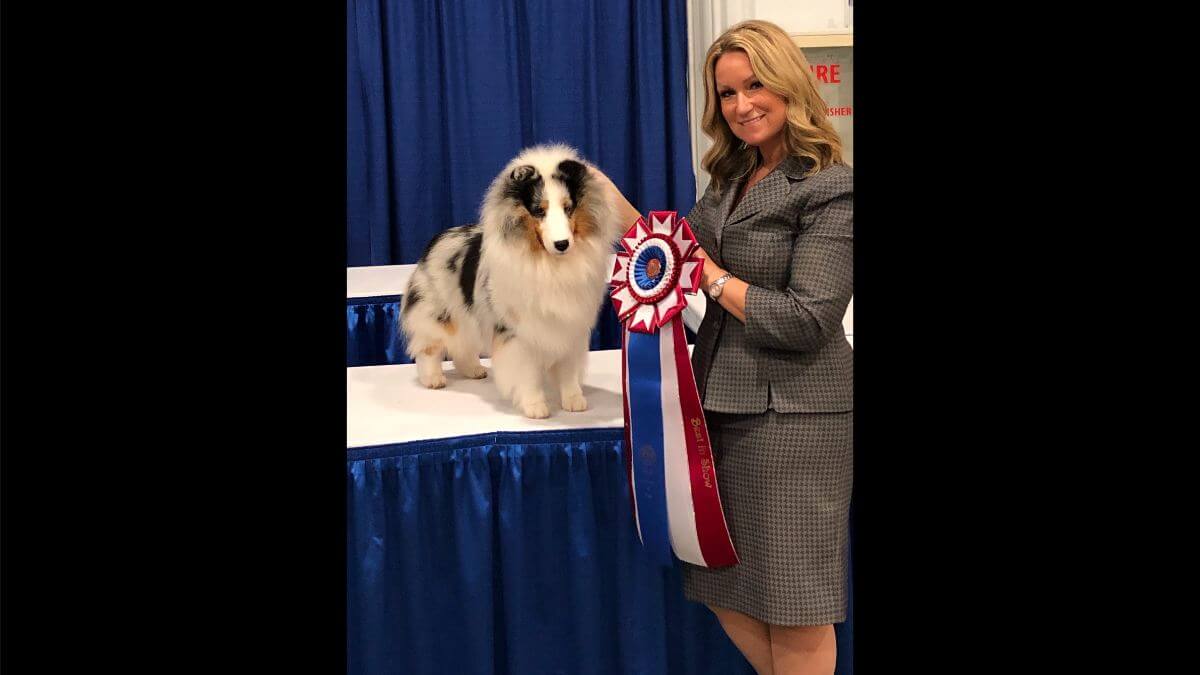


Home » Tracy Robinson | Mystic

Tracy Robinson
1. I have been so blessed to have been heavily involved in the dog world since 1990. I remember going to my first show and instantly being hooked. I started in Junior Showmanship when I was 9. I started working for professional handlers at 11 years old and I thoroughly enjoyed showing all breeds. I showed and finished most of our dogs from the time I was very young. My mom, Lorna Stolz, founded “Mystic” Shetland Sheepdogs and handed over the reins to me in 2005. The first ASSA National I ever attended was in 1998 in Tucson, Arizona. I was so thrilled to be there and meet some of my idols whom I had only recognized from magazine ads. I have lived in Devon, Alberta, Canada, since 2003, where I own and operate an all-breed grooming salon in addition to my breeding program.
2. Overall, I am very pleased with the direction that my breed is headed in. I find that the health has improved so much, thanks to DNA testing. I believe that the temperaments are improving as well as fronts. We still need some help with some rears and tail sets.
3. It is sad to see the sport decline for a few reasons, but the one thing that stands out to me the most is that I feel we currently live in a world of instant gratification. We all know that the dog world can be tough, but I see people walking away when they don’t win or get what they want. Having a good mentor is priceless. Judging is and always has been subjective. I greatly appreciate when foreign judges come to North America and judge per our Breed Standard. Unfortunately, this is not always the case. Sadly, the number of shows has declined, but I find that clubs are working hard to increase those numbers since COVID. We need more volunteers to keep our sport alive.
4. Although performance events are not where I compete, it’s just as important as Conformation. I encourage all of my companion puppy families to get involved with all types of classes and events. I believe that it is imperative to show the public how incredible our pets can be and how important it is to acquire purposefully well-bred animals that are sound in body and mind.
5. If used responsibly, social media has its benefits; sharing wins, upcoming litters, lost pets, etc. Not only for breeders/exhibitors but for clubs spreading the news about shows. Being able to network easily with other fanciers is a bonus. Just like anything, however, a few bad apples can turn things sour in a hurry.
6. Transportation and venues are the biggest challenges. It is getting increasingly difficult to fly with or ship animals. Venues are getting difficult to secure. The cost and availability can be real obstacles for clubs. It’s so important for exhibitors to do their part. We should all leave things in better condition than we find them.
7. I have seen an influx in breeders willing to help educate the public about preservation breeding, and the benefits of owning a well-bred purebred. Luckily, there have also been huge improvements in technology which are benefitting the safety of our animals. For example, temperature monitoring devices. Another example is being able to receive win photos on the same day. I very much remember a time when we had no idea of the quality of a photo that was going to arrive—anywhere between two and six weeks—in the mail.